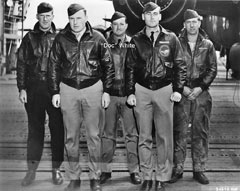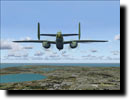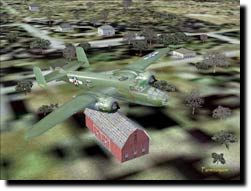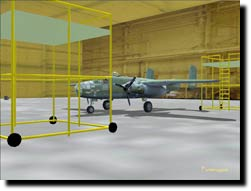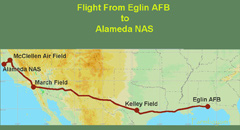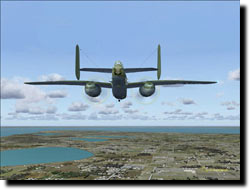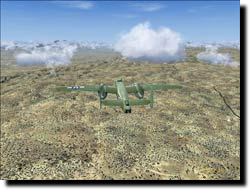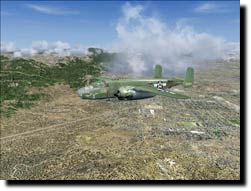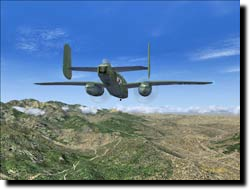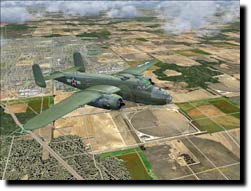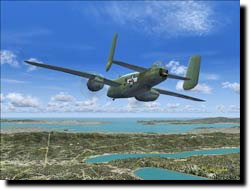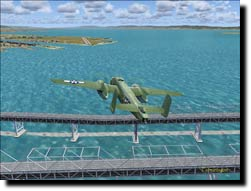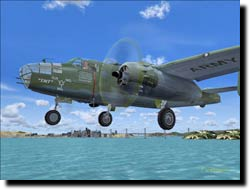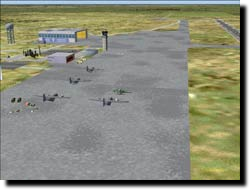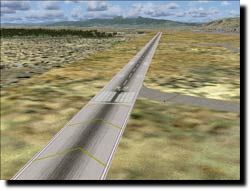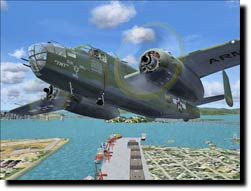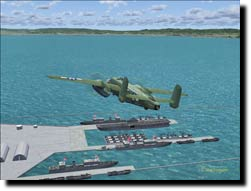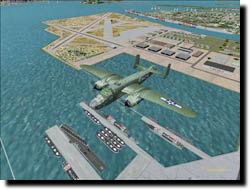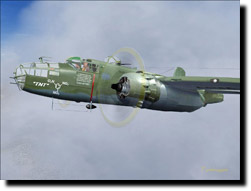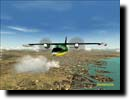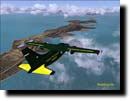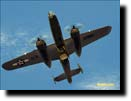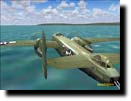My Dad used to quote a saying, “‘If” is the biggest word in the dictionary!” How can “If” be the biggest word? This was a little too “deep” for our young minds! I do believe he knew this and went on to tell us that the word itself is small, but the ramifications (I’m sure he used a simpler word for us at the time!) of the word “if” are huge. I had found myself asking “what if” after having read the memoirs of Dr. /Major Thomas R. White, who found a way to be included amongst the volunteers for a “Top Secret” mission.
Back when I could still remember where I put my keys, I would still have been hard pressed to remember all of the names of the crews that manned the B-25’s on that April day in 1944. I remember the part of “Doc” in the movie “30 Seconds over Tokyo”, written by Lt. Ted Lawson, the pilot of “Ruptured Duck”, one of the 16 B-25’s that took part in the raid. The “Doc’s” character in the movie played a crucial role in saving Lawson’s life, but his role, along with others, had to be shortened for the movie.
Doctor Thomas Robert White left the military at the rank of Major. He was born in March of 1909 in Maui, Hawaii. He was home schooled, according to his daughter Vikki, until the family moved to California, where he enrolled in and graduated from Redlands High School, Redlands, CA. He then went on to the California Institute of Technology, where he graduated with a BS degree. White took on post graduate work at Harvard University and also at the University of Southern California. He was
Back when I could still remember where I put my keys, I would still have been hard pressed to remember all of the names of the crews that manned the B-25’s on that April day in 1944. I remember the part of “Doc” in the movie “30 Seconds over Tokyo”, written by Lt. Ted Lawson, the pilot of “Ruptured Duck”, one of the 16 B-25’s that took part in the raid. The “Doc’s” character in the movie played a crucial role in saving Lawson’s life, but his role, along with others, had to be shortened for the movie.
Doctor Thomas Robert White left the military at the rank of Major. He was born in March of 1909 in Maui, Hawaii. He was home schooled, according to his daughter Vikki, until the family moved to California, where he enrolled in and graduated from Redlands High School, Redlands, CA. He then went on to the California Institute of Technology, where he graduated with a BS degree. White took on post graduate work at Harvard University and also at the University of Southern California. He was
The Story of Maj. T. R. "Doc" White
Doctor/Gunner B-25 Doolittle Raid
Crewmember of "TNT"
From the memoirs of "Doc" White
By Harold "Farmboyzim" Zimmer
Doctor/Gunner B-25 Doolittle Raid
Crewmember of "TNT"
From the memoirs of "Doc" White
By Harold "Farmboyzim" Zimmer
The crew of “TNT”; Sessler, Smith, “Doc” White, Williams, Saylor
awarded his M.D. degree at Harvard Medical School in 1937 and went on to Johns Hopkins for his post graduate training, interning in Baltimore and Honolulu.
Dr. White joined the United States Army Air Corps in June of 1941. His duties were primarily medical as a new Lieutenant serving in the Air Corps. “Doc”, as I will refer to him, with respect of course, had gotten wind of an operation that was seeking volunteers. In his own words, he “had a habit of sticking his neck out”. As a brand new Aviation Medical Examiner (AME), he was not sure how he was going to wing a spot on the mission crew list, but he contacted his commanding officer, Col. Jack Hilger, who at the time was a Major, and inquired if there was a way to “possibly, repeat, possibly” squeeze him in somewhere. The following day, “Doc” received his orders to report to Eglin Field, in Florida. Having been in the military, I find the rapid response to his request was amazing!
Dr. White joined the United States Army Air Corps in June of 1941. His duties were primarily medical as a new Lieutenant serving in the Air Corps. “Doc”, as I will refer to him, with respect of course, had gotten wind of an operation that was seeking volunteers. In his own words, he “had a habit of sticking his neck out”. As a brand new Aviation Medical Examiner (AME), he was not sure how he was going to wing a spot on the mission crew list, but he contacted his commanding officer, Col. Jack Hilger, who at the time was a Major, and inquired if there was a way to “possibly, repeat, possibly” squeeze him in somewhere. The following day, “Doc” received his orders to report to Eglin Field, in Florida. Having been in the military, I find the rapid response to his request was amazing!
Unique take-off technique employed
Known as “Special Project Detachment 1”, the crews were told that they would be ferrying aircraft to a foreign country with a “chance of some action”. “Doc” and the rest of the men were introduced to Lt. Col. Jimmy Doolittle, where he quickly won over the hearts of the men. Known to the men as “Jimmy”, his sincerity, enthusiasm, and friendliness was contagious. Doolittle never hesitated when it came to support for his crews, and flew to Washington D.C. himself, to acquire vaccines directly from the Surgeon General that were requested by “Doc”.
In the memoirs of “Doc” White, he relates that the training the crews received was very similar to that depicted in the movie, “30 Seconds over Tokyo”. Short take-off runs were practiced, along with low level flying. “We’d have to gain altitude to fly over a cow!” “Doc” White stated. Navigation, bombing and gunnery were taught as well to all crew members, in case of causalities encountered on the mission. “Doc” himself trained to bomb and navigate, and he could also pilot the aircraft as he had a private pilot’s license before the war. He proved to be a “hot shot” when it came to gunnery on the .50 caliber machine guns, coming in second in the detachment, a feat he was considerably proud of.
In the memoirs of “Doc” White, he relates that the training the crews received was very similar to that depicted in the movie, “30 Seconds over Tokyo”. Short take-off runs were practiced, along with low level flying. “We’d have to gain altitude to fly over a cow!” “Doc” White stated. Navigation, bombing and gunnery were taught as well to all crew members, in case of causalities encountered on the mission. “Doc” himself trained to bomb and navigate, and he could also pilot the aircraft as he had a private pilot’s license before the war. He proved to be a “hot shot” when it came to gunnery on the .50 caliber machine guns, coming in second in the detachment, a feat he was considerably proud of.
As far as his medical role within the detachment went, “Doc” White prepared the crews with numerous vaccines. Most of the crews took the shots in stride, with “Doc” hearing the usual remarks of “I’m not a pin-cushion!” “Doc” White states that one chap asked for latex injections so he could be “Self-sealing” like the gas tanks!” Medical kits were prepared and assembled for the crews, and “Doc” assembled a small surgical kit, having to bear in mind the weight considerations. Other than his usual medical duties, “Doc” was trained and prepared for the mission just like the rest of the crews. More were trained than were actually needed, so competition was keen amongst the men to be included in the crew listings.
channels was very time consuming due to the nature and secrecy of the mission. Overall, the Army and Navy worked exceptionally well in this endeavor, with respect being mutual amongst the men.
The aircraft, B-25 Mitchell Medium Bombers, were inspected closely by not only the Air Corps personnel, but engineers and other experts from the factories themselves, giving them a thorough going over as well. De-Icer’s and extra gas tanks were installed on all 16 aircraft, along with fake tail guns, to save weight. The Norden bomb sites that were normally used were still unknown to the enemy, so one of the crew members, Ross Greening, rigged up a special low-level site to be used. In my research, I had read that the site used cost about $2.00 in parts, which, back in the ‘40’s was a fair amount of cash, but compared to the approximately $10,000 Norden site, it was stated it worked just as well! While still at Eglin, nose art was applied to some of the planes. The imagination ran wild when it came to the handy work depicted on the aircraft.
The aircraft, B-25 Mitchell Medium Bombers, were inspected closely by not only the Air Corps personnel, but engineers and other experts from the factories themselves, giving them a thorough going over as well. De-Icer’s and extra gas tanks were installed on all 16 aircraft, along with fake tail guns, to save weight. The Norden bomb sites that were normally used were still unknown to the enemy, so one of the crew members, Ross Greening, rigged up a special low-level site to be used. In my research, I had read that the site used cost about $2.00 in parts, which, back in the ‘40’s was a fair amount of cash, but compared to the approximately $10,000 Norden site, it was stated it worked just as well! While still at Eglin, nose art was applied to some of the planes. The imagination ran wild when it came to the handy work depicted on the aircraft.
When Lt. (S.G.) “Hank” Miller of the U.S. Navy arrived as Liaison Officer, it dawned on “Doc” as well as other crew members, that something out of the ordinary was taking place, considering the scope of training they had been receiving. The crews were finally told that they were to bomb an “enemy capital”, nothing more. The men quickly surmised that there was to be a carrier launch to bomb Tokyo.
Lt. Miller trained the men in naval customs and courtesies, along with how to get the plane off the ground in the shortest possible distance. He also pointed out another important Navy fact, and that was to “never call a SHIP a BOAT!” Boating throughout his life made “Doc” familiar with the nautical way of doing things, even before the military, and had been on board many navy vessels, including the USS Lexington. The navy personnel were outstanding in their cooperation, and especially with their supplies. Getting supplies through the normal Army
Lt. Miller trained the men in naval customs and courtesies, along with how to get the plane off the ground in the shortest possible distance. He also pointed out another important Navy fact, and that was to “never call a SHIP a BOAT!” Boating throughout his life made “Doc” familiar with the nautical way of doing things, even before the military, and had been on board many navy vessels, including the USS Lexington. The navy personnel were outstanding in their cooperation, and especially with their supplies. Getting supplies through the normal Army
“Doc” was given his choice of two of the B-25’s to crew, and he chose the aircraft that was piloted by Lt. D.G. Smith. “TNT” was her name, with the chemical formula for the explosive on the nose of the plane. “Doc” went with “TNT”, the chemical formula reminding him of his days at Cal Tech. He did not realize it at the time, but his decision was one that would have meant life or death for him, as the crew of the other aircraft, which was piloted by Lt. Bill Farrow, was captured by the enemy, and the entire crew executed.
After about six weeks of training at Eglin, all B-25’s with their crews departed for the west coast, via Kelley Field, Texas, March Field, California, and then to Sacramento Air Depot, California. “Doc” had a chance to visit with his family for a few hours in California, and could not speak of the mission to come, even to them. His family thought that he was on a routine cross-country flight. The visit with his family meant the world to “Doc”, and reinforced his desire to make it back home after completing the mission.
After about six weeks of training at Eglin, all B-25’s with their crews departed for the west coast, via Kelley Field, Texas, March Field, California, and then to Sacramento Air Depot, California. “Doc” had a chance to visit with his family for a few hours in California, and could not speak of the mission to come, even to them. His family thought that he was on a routine cross-country flight. The visit with his family meant the world to “Doc”, and reinforced his desire to make it back home after completing the mission.
“Watch out for that cow!”
Practicing low-level flight
Ready to taxi
Taking a “break”!
for the journey to “Hawaii”. Not until they were out of sight of land did Captain Mitscher go on the intercom to all hands announcing the real mission objective, a strike on Japan itself. Needless to say, the civilian was more than just unhappy!
While in Sacramento, the aircraft were all outfitted with new propeller blades and continued their training until March 31st, 1942, when they flew from Sacramento to the Alameda/Oakland Airport, California, where they saw the USS Hornet for the first time. In “Doc’s” own words, “She looked a lot bigger tied up at the dock than she did a few days later!” The B-25’s were hoisted up and onto the deck of the Hornet and parked together “like a jig-saw puzzle”. As the elevators could not accommodate the B-25, being tied down on the deck was the only option. The hanger deck of the Hornet was crammed full of its regular compliment of aircraft, to make room for the bombers.
The sight of Army Bombers on board a Navy aircraft carrier was a hard site to hide, so the Navy let go with some “scuttlebutt”, otherwise known as rumors, that the planes were being ferried to Hawaii. This plan worked so well that a civilian representative of one of the companies producing aircraft for the navy heard of this and thought that he could catch a free ride to Hawaii. He was refused of course, but with the inevitable strings that are there to be pulled, he wangled his way on board
The sight of Army Bombers on board a Navy aircraft carrier was a hard site to hide, so the Navy let go with some “scuttlebutt”, otherwise known as rumors, that the planes were being ferried to Hawaii. This plan worked so well that a civilian representative of one of the companies producing aircraft for the navy heard of this and thought that he could catch a free ride to Hawaii. He was refused of course, but with the inevitable strings that are there to be pulled, he wangled his way on board
Route of “TNT” from Eglin AFB to Alameda NAS
The Hornet sailed under the Golden Gate Bridge on the morning of April 2, 1942, with a convoy of escort Cruisers and Destroyer’s. The weather was rough and cold as the convoy zigzagged its way towards Japan. Some had sea sickness, but all soon gained their sea legs. In the days that followed, “Doc” as well as the other crew members found that finding one’s way around on board ships the size of these was truly an adventure! You wouldn’t know half the time where you were going to end up when you made a turn, or went through a hatch.
At dawn and dusk of each day at sea, the ships would go to “General Quarters”, as this was a time that the ships were most vulnerable to attack from submarine or air attack. The B-25’s would man their planes, ready for a quick take-off in case of attack. The navigators of the aircraft kept a constant vigil on where their position was relative to the nearest friendly land mass, and if there was no time to get the B-25’s off the deck and into the air, the crews along with navy personnel, were push them off the deck, into the sea, making room for the aircraft below deck to take off and defend the carrier. “Doc” said that whenever he would hear the bugle call of General Quarters in a movie or on the radio, his blood pressure would rise 20 points!
At dawn and dusk of each day at sea, the ships would go to “General Quarters”, as this was a time that the ships were most vulnerable to attack from submarine or air attack. The B-25’s would man their planes, ready for a quick take-off in case of attack. The navigators of the aircraft kept a constant vigil on where their position was relative to the nearest friendly land mass, and if there was no time to get the B-25’s off the deck and into the air, the crews along with navy personnel, were push them off the deck, into the sea, making room for the aircraft below deck to take off and defend the carrier. “Doc” said that whenever he would hear the bugle call of General Quarters in a movie or on the radio, his blood pressure would rise 20 points!
Coming up on the Texas coast
Crossing the deserts of the southwest
Leaving March Field for the CA Central Valley
Skirting the Tehachapi Mountains
Over the fertile valley’s of Central California
San Francisco Bay Area
Low over the Bay Bridge
San Francisco in the background
While proceeding to their launch area, each day was like the next, very routine. Lt. Hank Miller continued lectures and discussions, along with Lt. Cmdr. Stephen Jurika and Captain Apollo Soucek. Jurika had been assigned to the Naval Attaché Mission to Tokyo for several years and was able to tell the crews about the Japanese and their culture. Soucek instructed the B-25 crews in what to expect in the way of enemy ground and air defenses, and the best ways to deal with the situations. Target maps and photographs of the target areas were available for study. “Doc” White was able to recognize streets and buildings in and around Kobe, Japan, the information was so accurate.
“Doc” found a few more vaccines through the generosity of the Navy doctors and corpsmen, much to the dismay of course of the B-25 crews! He also gave lectures to the crews on hygiene and sanitation while in primitive conditions. Germs can be as bad as a bullet, when it comes to a simple scratch or cut left unattended. He also put together personal medical kits for each of the crew members, containing a dose of morphine, field dressing and sulfanilamide tablets in case of wounds sustained, as well as 60 grains of quinine for protection against malaria, tincture of iodine, caffeine tablets to help the crews stay alert for the long haul to China, and last but not least, a pint of whiskey “for relaxation when it was over!”
On the twelfth of April, General Quarters was sounded as usual that morning, but everyone stood their posts, being relieved in shifts to go and eat breakfast. Shortly thereafter, alarm bells rang and word was passed that an aircraft had been picked up on radar. It was finally sighted in the distance, coming in fast and low. The crews did not know if it was friendly or enemy, and were preparing to open fire, when at last the plane flashed a recognition signal to the Hornet. It was a fellow Navy plane, and flew low over the deck of the Hornet, dropping a message that the carrier USS Enterprise and her accompanying cruisers and destroyers would soon be linking up with the Hornet. “Doc” pointed out in his memoirs that he was most impressed with the navigational skill and timing that it had to have taken, to bring these two parts of the task force together, considering there was absolute radio silence.
“Doc’s” observation at the seamanship that was displayed during refueling operations for the ships was that of amazement. The US Navy developed the technique of refueling at sea, which enabled the US Forces to operate in the waters of Japan, without direct access to a friendly port for refueling. “The sea was very rough, and it took three tries to refuel the ‘Hornet’”, “Doc” recalled. “On the first try, a line parted, (a dainty thing, 10 inches in diameter!), and a seaman was washed overboard, but recovered from the sea unharmed. On the second try, a hose line burst, and doused the tanker with thick, black oil before the pumps could be stopped. The third try was the charm though, and everything went well!”
“Doc” found a few more vaccines through the generosity of the Navy doctors and corpsmen, much to the dismay of course of the B-25 crews! He also gave lectures to the crews on hygiene and sanitation while in primitive conditions. Germs can be as bad as a bullet, when it comes to a simple scratch or cut left unattended. He also put together personal medical kits for each of the crew members, containing a dose of morphine, field dressing and sulfanilamide tablets in case of wounds sustained, as well as 60 grains of quinine for protection against malaria, tincture of iodine, caffeine tablets to help the crews stay alert for the long haul to China, and last but not least, a pint of whiskey “for relaxation when it was over!”
On the twelfth of April, General Quarters was sounded as usual that morning, but everyone stood their posts, being relieved in shifts to go and eat breakfast. Shortly thereafter, alarm bells rang and word was passed that an aircraft had been picked up on radar. It was finally sighted in the distance, coming in fast and low. The crews did not know if it was friendly or enemy, and were preparing to open fire, when at last the plane flashed a recognition signal to the Hornet. It was a fellow Navy plane, and flew low over the deck of the Hornet, dropping a message that the carrier USS Enterprise and her accompanying cruisers and destroyers would soon be linking up with the Hornet. “Doc” pointed out in his memoirs that he was most impressed with the navigational skill and timing that it had to have taken, to bring these two parts of the task force together, considering there was absolute radio silence.
“Doc’s” observation at the seamanship that was displayed during refueling operations for the ships was that of amazement. The US Navy developed the technique of refueling at sea, which enabled the US Forces to operate in the waters of Japan, without direct access to a friendly port for refueling. “The sea was very rough, and it took three tries to refuel the ‘Hornet’”, “Doc” recalled. “On the first try, a line parted, (a dainty thing, 10 inches in diameter!), and a seaman was washed overboard, but recovered from the sea unharmed. On the second try, a hose line burst, and doused the tanker with thick, black oil before the pumps could be stopped. The third try was the charm though, and everything went well!”
Lackland AFB (Kelley AF Annex)
March Field, Southern California
On approach to Alameda NAS (note the “X” on RW)
Alameda NAS Scenery enhanced
Fly-by over the Oakland/Alameda Docks
“Don’t even think about landing on her!”
Alameda Naval Air Station, CA
At General Quarters on the morning of the thirteenth, the bull horns on board ship came alive, startling everyone, but it was an announcement that they had just crossed over the International Date Line. Being taken by surprise by the bull horns was an amusing surprise, but another surprise awaited the crew of “TNT”. During a routine run-up of the aircraft’s engines, a loud knock was detected in the right hand motor. Maintenance personnel took the engine off and below decks to find that a pin had dropped out of one of the gears, and thankfully had not gotten itself caught in between the teeth of the gears. Here is just one of the many “what if” factors that I had mentioned earlier. IF that engine could not have been repaired, “Doc” would have been riding in Lt. Bill Farrow’s aircraft, which I had mentioned earlier, had been captured and the crew executed.
At this point in the journey, all of the B-25’s had been gassed and bombed-up. Extra gas tanks were provided for the flight. Most of the planes carried three, 500 pound demolition bombs, along with a “cluster” of 128 four pound thermite incendiary bombs. “TNT” however carried four of these “clusters”. Each of the planes had different types of targets that they were to attack, so the munitions had to be loaded accordingly.
At this point in the journey, all of the B-25’s had been gassed and bombed-up. Extra gas tanks were provided for the flight. Most of the planes carried three, 500 pound demolition bombs, along with a “cluster” of 128 four pound thermite incendiary bombs. “TNT” however carried four of these “clusters”. Each of the planes had different types of targets that they were to attack, so the munitions had to be loaded accordingly.
The original plan had been for Lt. Col. Doolittle and his crew to take off alone about three hours before dusk on the 18th of April, reaching Tokyo just around dusk, with just enough light to see his targets. The rest of the B-25’s were to take off at dusk, reaching the target area just after nightfall, but with the light of the fires that were started by Doolittle’s earlier bombing run, they would be able to see, to some degree, their own objectives. They were to fly on to China, reaching the coast about dawn, on April 19th, find their visual landmarks, and fly on to the bases that the Chinese had prepared for them. From those bases, after refueling, they were to fly on to Chungking. Arrangements had been made for a plane to make the rounds of these various bases every few days, in the event of any crash landings, and crews making it into the bases on foot. As “Doc” pointed out, “the best laid plans…” No one knew at the time just how much they would have to deviate from that “Plan”!
So ends the first part of “Doc” White’s story. In the next issue, we’ll take it up as the B-25’s lumber down the deck of the USS Hornet and taking off, flying into danger, as well as history!
So ends the first part of “Doc” White’s story. In the next issue, we’ll take it up as the B-25’s lumber down the deck of the USS Hornet and taking off, flying into danger, as well as history!
There were some excellent freeware scenery packages out there for this first leg of the story. I used the file duke_fld.zip to enhance the Duke Field Annex to Eglin Air Force Base. This scenery was put together by Gordon Perry, who states he used a “bit of artistic license” in creating the package. Lackland Air Force Base (Kelly Field Annex) San Antonio, TX, by Jim Donlin was also utilized (ksfk.zip). As for the Alameda NAS, the field is closed in FS9; yellow “X’s” marking the runways, but thanks to Derek and Brendan Webb of DBWsim Design, the field is open for business! The package is an outstanding scenery addition for this field, and comes complete with shipping docked at the ports, as well as naval vessels, including an aircraft carrier. Don’t try landing on the deck of the carrier or you’ll wind up swimming! It’s just there for looks!
The aircraft used for this article is Mid-Atlantic Air Museums (MAAM-SIM) B-25 Mitchell Bomber, “Briefing Time”, with a repaint by yours truly depicting the aircraft “TNT”. This is not an exact replication of the livery, but a tribute to the men and the machine. The names of the crew are listed on the port side near the nose, with the nose art representing the chemical formula for TNT. Tail markings and other markings are accurate. The “Briefing Time” model is excellent, and if you don’t have it in your virtual hanger, you should. Proceeds from the sale of the model goes toward keeping the real “Briefing Time” in shape and flyable.
I also used FS Environment and Ground Environment Pro, from Flight1 for those outstanding textures you see on the ground and in the air! USA Roads from Abacus aided me in recognizing highways and roads, for the entire United States. This is an excellent VFR enhancement for your sim! CH Products are my “gear of choice” for my flights as well.
I want to thank Victoria White-Hand, the daughter of “Doc” White, for sharing this information with me and allowing me to tell her fathers story. Meeting her and listening to her stories of her father, has put a more personal feeling in the story for me, for which I am deeply grateful!
The aircraft used for this article is Mid-Atlantic Air Museums (MAAM-SIM) B-25 Mitchell Bomber, “Briefing Time”, with a repaint by yours truly depicting the aircraft “TNT”. This is not an exact replication of the livery, but a tribute to the men and the machine. The names of the crew are listed on the port side near the nose, with the nose art representing the chemical formula for TNT. Tail markings and other markings are accurate. The “Briefing Time” model is excellent, and if you don’t have it in your virtual hanger, you should. Proceeds from the sale of the model goes toward keeping the real “Briefing Time” in shape and flyable.
I also used FS Environment and Ground Environment Pro, from Flight1 for those outstanding textures you see on the ground and in the air! USA Roads from Abacus aided me in recognizing highways and roads, for the entire United States. This is an excellent VFR enhancement for your sim! CH Products are my “gear of choice” for my flights as well.
I want to thank Victoria White-Hand, the daughter of “Doc” White, for sharing this information with me and allowing me to tell her fathers story. Meeting her and listening to her stories of her father, has put a more personal feeling in the story for me, for which I am deeply grateful!
I also used FS Environment and Ground Environment Pro, from Flight1 for those outstanding textures you see on the ground and in the air! USA Roads from Abacus aided me in recognizing highways and roads, for the entire United States. This is an excellent VFR enhancement for your sim! CH Products are my “gear of choice” for my flights as well.
I want to thank Victoria White-Hand, the daughter of “Doc” White, for sharing this information with me and allowing me to tell her fathers story. Meeting her and listening to her stories of her father, has put a more personal feeling in the story for me, for which I am deeply grateful!
I want to thank Victoria White-Hand, the daughter of “Doc” White, for sharing this information with me and allowing me to tell her fathers story. Meeting her and listening to her stories of her father, has put a more personal feeling in the story for me, for which I am deeply grateful!
MAAM-SIM’s B-25
Thanks For The Visit !
Click On Any Picture For A Larger View

* Reviews * Articles *
* Tutorials *
* Forums * Events *
* Multi-Player Server *
* TeamSpeak Server *
* Tutorials *
* Forums * Events *
* Multi-Player Server *
* TeamSpeak Server *
* MSFS2004/FS9 * FSX *
* Train and Ship Sims *
* Games *
* Train and Ship Sims *
* Games *
* X-Plane *
